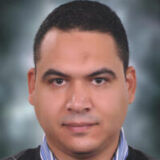Healthcare is a very challenging service to offer. You can find many books, articles or blogs discussing why it is so challenging. The fragmented nature (some call it the dirty-nature) of the service and the need for a hermetic integration and interoperability is always a matter of discussion among most of the healthcare forums.
This blog is somewhat different as it spots the lights on other challenges; mainly the challenges facing any organization to establish a perfect and satisfactory billing cycle (both to the patient and the provider (whether private or public)).
A Perfect Billing Cycle is Really a Challenge
To feel the importance of a correct billing process, it is enough to know that four in five medical bills (in the US) contain at least a minor mistake. These minor mistakes were found to cost the US $68 billion annually as reported by Medliminal Healthcare Solutions (MHS). Other challenges might include repeated errors in claims, repeated refusal of claims, incomplete patient’s data, fraud, patients who are not wealthy enough to pay or who consistently delay the payment.
Few workers in the healthcare field are aware of the administrative aspects of payments systems. First, let us have a quick overview of the types of healthcare organizations.
Different Types of Healthcare Organizations
- Hospitals
- Ambulatory Centers or Clinics
- Long-Term Care Services (LTC)
- Public Health Agencies and Programs
- Community Health Programs
- Physician Practices
- Pharmacies
- Integrated Delivery Network (IDN): The concept of IDNs may be new to some readers. It means that the healthcare organization is composed of different providers (maybe in different sites). The providers in this organization show complete integration in administration and functionalities.
Different Roles of the Government in Healthcare Delivery
The role of government may vary. It may act as a “Provider for the Service” as in the case of the US Department of Veterans Affairs, the public health clinics in rural and underserved areas or like the NHS hospitals in the UK. The government owns and operates the facility. Moreover, it employs the administrative and clinical staff, including physicians
In other cases, the government may act as just a “Payor of the Service” (like the National Health Insurance (NHI) in the US (Medicare and Medicaid) or like the Ontario Health Insurance Plans (OHIP) in Ontario, Canada. In this case, the government depends on the taxes to pay for the insurance plans.
The last role for the government is to act as a “Regulator of the Service“. In the US, the healthcare services are organized and regulated by the Health Insurance Portability and Accountability Act (HIPAA) and the Emergency Medical Treatment and Active Labor Act (EMTALA). In the United Kingdom, the healthcare service is regulated by the UK protection ACT of 1998 and the European Union Data Protection Directive (EUDPD). The role of the government here is to ensure that medical information that or transferred electronically is protected through these regulations.
Healthcare Service Funding
In general, the funding of healthcare service is obtained either through private insurance, public financing, or a combination of both. Here are different models of how governments can fund the healthcare service:
- Canada: The government finances the healthcare service through general taxes, but healthcare is delivered by the private sector.
- UK: In addition to what National Health Services (NHS) offers, the government also manages the infrastructure for the delivery of care.
- US: There are 2 programs: The first is the Medicaid which covers people below pre-defined income levels (parameters of coverage may vary from a state to another). The second insurance program is the Medicare which covers people who age 65 years and over. The US is ranked 31stwith a life expectancy at birth (79.3 years).
- Japan: The healthcare insurance coverage is universal for all the citizens and it focuses mainly on primary healthcare. Japan has the longest life expectancy at birth (83.7 years).
- Some countries offer a combined public/private system. The funding takes place through employer-based coverage and private out-of-pocket payment.
Types of Payment Calculation
Payment for the service may be calculated per procedure, per day or as a fee-for-service. Every type has its own pros and cons. In the first two types, the provider may add services or days of care. In the third, the client may negotiate about rates of the service or whether the service is needed or not. A feasible solution appeared a few years ago; namely Diagnosis Related Groups (DRG). Many developed countries already applied it. Many low-and-middle-income countries also started to explore and pilot the idea as reported by the WHO.
Diagnosis Related Groups (DRG)
DRG services may be grouped for payment where a “Set-fee” is used for each specific diagnosis regardless of resources or costs incurred.
DRG datasets and their related data became of great importance to Health Economists and decision makers in any government.
John Snow Labs catalogs have more than 1775 normalized datasets, most of them are freshly curated and machine and manually validated. In this catalog, you can find curated datasets for more than 3,000 U.S. hospitals that receive Medicare Inpatient Prospective Payment System (IPPS) payments for the top 100 most frequently billed discharges, paid under Medicare based on a rate per discharge using the Medicare Severity Diagnosis Related Group (MS-DRG) for Fiscal Year (FY) 2013. These DRGs represent more than 7 million discharges or 60 percent of total Medicare IPPS discharges.
Insurance and Standardized Terminologies
The combination of Healthcare Financing Administration Common Procedure Coding System and Current Protocol Terminology, Fourth Edition (HCPCS/CPT-4) was developed to support medical billings.
The Healthcare Common Procedure Coding System (HCPCS) is a collection of codes that represent procedures, supplies, products, and services which may be provided to Medicare beneficiaries and to individuals enrolled in private health insurance programs. You can download related datasets through John Snow Labs repository. These files contain the Level II alphanumeric HCPCS procedure and modifier codes and their type of change status.
Overcoming Billing Cycle Challenges
Healthcare organizations must take serious steps towards establishing a perfect billing cycle. This can be done through:
- A manual billing cycle is exhaustive for all the administrative team, migrating to an automated system is recommended then.
- Enforce data completeness through entrapping mandatory fields in the EMR and setting the right database constraints.This will eradicate the problem of incomplete patient data.
- Recruitment of certified well-trained Medical Billers. The American Academy of Professional Coders (AAPC) organizes the exam of the “Certified Professional Coder” certificate.
- Using standardized terminologies as:
- International classification of diseases (ICD) with its different versions
- For dentists, it is recommended to use the Code on Dental Procedures and Nomenclature (CDT) for their billing cycle
- CPT (Current Procedural Terminology)
- Healthcare Common Procedure Coding System (HCPCS)
As inaccurate coding remains the most prominent challenge, I recommend reviewing John Snow Labs catalog as it endorses different datasets for ICD-10 and HCPCS. The catalog contains a complete ICD-9 ICD-10 and Clinical Classification Codes Data Package.
Data wrangling is vital in optimizing the billing cycle by ensuring accuracy and efficiency in healthcare operations. Organizations can further enhance their billing processes, reduce errors, and improve overall patient satisfaction by incorporating advanced techniques such as Generative AI in Healthcare and utilizing a Healthcare Chatbot.





























